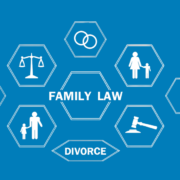Child Support, what is it and how does it work?
One very important consideration in a family law matter in which a couple has children is what child support arrangements are going to be put in place in relation to the costs of the children moving forward. There are 3 main ways to document a child support agreement, set out as follows:
- an ad hoc arrangement agreed between the parties;
- a Child Support Assessment issued by the Child Support Agency; and/or
- a Binding Child Support Agreement.
Ad hoc agreement
Some parties are able to reach an agreement in relation to child support amongst themselves, which may involve one party paying the other party a set amount per week. Often, an ad hoc agreement is a verbal agreement between the parties and not formally documented in any way.
Whilst ad hoc arrangements are often suitable for very amicable couples, the risk associated with an ad hoc agreement is that there is nothing binding the paying party to continue paying child support in accordance with the agreement moving forward. In the event that the paying party were to cease making payments in accordance with the ad hoc agreement, the receiving party would have no recourse to compel the paying party to continue paying in accordance with the agreement. It is for this reason that ad hoc agreements in relation to child support are not recommended.
Child Support Assessment
A Child Support Assessment is issued by the Child Support Agency and is determined using a specific formula that addresses a number of variables. These variables include the number of children and each of their ages, the annual income of each party and the number of nights the children are in each party’s care.
If one party applies for a Child Support Assessment from the Child Support Agency, the Agency will issue an assessment which the paying party will be liable to comply with. Child Support Assessments vary if any of the above-mentioned variables change. For example, as the children grow older and specifically, once children turn the age of 13, the Child Support Agency will likely increase the assessment in circumstances where the cost of children increases as they grow older. Alternatively, in the event that either party’s income changes or the care arrangements for the children change, the Child Support Assessment will alter to reflect these new arrangements.
The benefit of a Child Support Assessment is that they are a legal obligation and the Child Support Agency will chase the payer in the event that they cease making payments in accordance with the assessment. However, in circumstances where child support assessments are dependent upon the above-mentioned variables, a Child Support Assessment amount can change quite regularly in the event that there are changes in care arrangements or income.
Binding Child Support Agreement
The final way that parties may agree to document a child support agreement is by way of a Binding Child Support Agreement. Binding Child Support Agreements set out both periodic amounts (ie weekly, fortnightly, monthly etc.) as well as non-periodic expenses that arise sporadically throughout the year (such as school fees and expenses, private health cover, extra-curricular costs, gap medical costs etc). Similar to an Assessment, Binding Child Support Agreements impose a legal obligation upon the parties to pay child support in accordance with the Agreement.
Unlike Child Support Assessments, Binding Child Support Agreements once entered into are binding and not variable. As such, obligations in accordance with Binding Child Support Agreements do not alter in the event of change in circumstances such as reduction or increase of income, change of care arrangements etc (unless a clause is included to specifically provide for such change in the agreement). The parties can expect to be bound by a Binding Child Support Agreement until the children reach the age of 18 years or finish their high school education (whichever is later), unless agreement is reached to alter the Binding Child Support Agreement prior.
If you require assistance with your family law matter, please not hesitate to contact a member of our Family Law Team.










Leave a Reply
Want to join the discussion?Feel free to contribute!